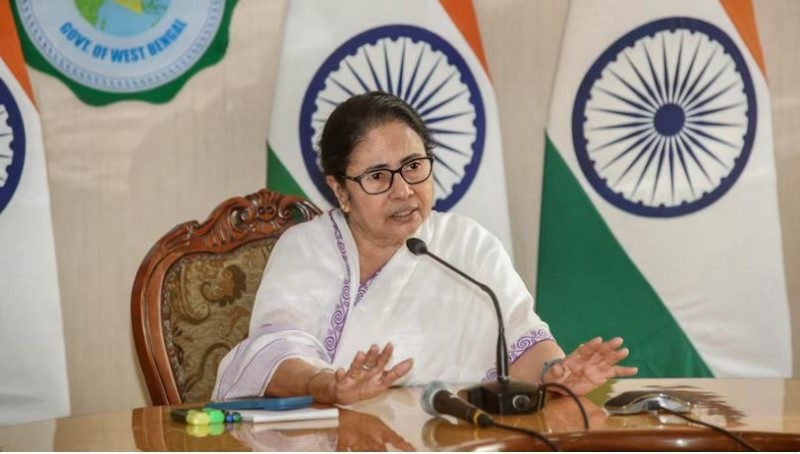
Kolkata: West Bengal Chief Minister Mamata Banerjee reached out to Jharkhand Chief Minister Hemant Soren on Sunday to address concerns over the release of water from dams in Jharkhand. Banerjee claimed that the water discharge from Jharkhand's dams was contributing to a flood-like situation in West Bengal.
In response, the Damodar Valley Corporation (DVC), which manages hydropower projects across Jharkhand and West Bengal, indicated that water discharge is expected to decrease due to reduced rainfall. The DVC also stated that there is no significant flood threat downstream at the moment. "I spoke to Jharkhand Chief Minister Hemant Soren about the escalating flood situation," Banerjee wrote on X. "I addressed the issue of sudden and massive water release from Tenughat Dam, which is currently flooding parts of West Bengal. I requested him to manage this situation more carefully."
Banerjee emphasized that she is actively monitoring the situation and coordinating with district officials in both south and north Bengal. She has instructed district magistrates to remain vigilant and implement precautionary measures to prevent any adverse events in the coming days. The DVC noted that the discharge of water from Tenughat Dam is expected to decline due to a drop in rainfall. On Sunday morning, the DVC released 1.2 lakh cusecs of water from Panchet and Maithon dams, following a heavy discharge from Tenughat upstream. On Saturday, 90,000 cusecs were released from Panchet and Maithon.
Anjani Dubey, Executive Director at DVC Maithon, explained that reduced rainfall would result in lower water discharge from Tenughat, which in turn will reduce the flow from Panchet and Maithon. He also highlighted improvements made by the West Bengal government in river management, increasing the water flow capacity from 70,000 cusecs to 1.5 lakh cusecs, which he believes mitigates the flood threat.
The Durgapur Barrage, receiving water from Panchet and Maithon about 12 hours after discharge, has been closely monitored. The West Bengal government has taken measures to safeguard lives and has cautioned the DVC against any abrupt increase in water release. Currently, several districts in southern West Bengal, including Purba Bardhaman, Paschim Bardhaman, Birbhum, Purba Medinipur, Paschim Medinipur, Bankura, Hooghly, and Howrah, are affected by the water release. The Damodar Valley Reservoir Regulation Committee (DVRRC), which includes West Bengal government representatives, makes decisions regarding water release.
A state government official confirmed that while no rivers are currently exceeding danger levels, some, including the Damodar, are approaching critical thresholds.
Parliament Set to Review Waqf Act Changes on August 5 to Curb Waqf Boards' Powers
Maharashtra Congress Holds Strategy Meeting Ahead of Assembly Elections
Two Youths Die in Road Accident While Heading to Ganga for Bath in Unnao